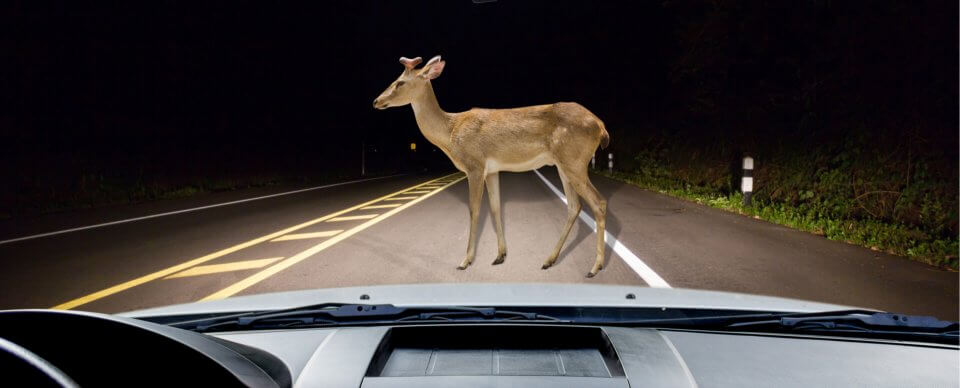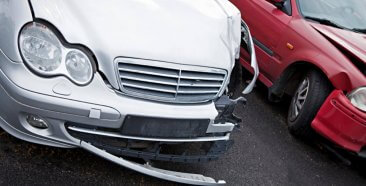
Hitting an animal with your car can be a frightening and financially expensive experience. According to the National Highway Traffic Safety Administration (NHTSA), yearly collisions involving just deer alone total 1.5 million car accidents. The Insurance Institute for Highway Safety puts the average collision cost at $2,800. The average weight of an adult deer ranges between 155 and 203 pounds. (According to Consumer Reports, the average deer-car collision costs almost $3,200).
You can be sure auto insurance companies aren’t thrilled about these statistics:
Facts about wildlife-related crashes
• Each year, about 200 people are killed
• Cost totals more than $8 billion
• 90 percent of the accidents occur on rural two-lane roads
• Most common animal involved is a deer
Top states, respectively, with most deer collisions
• West Virginia
• Iowa
• South Dakota
• Pennsylvania
• Michigan
The three most active months for deer collisions are October, November, and June…when love is in the air.
Because animal-related damage is usually classified as an “other than collision” claim, it’s a good idea to make sure your car insurance includes comprehensive coverage. This covers so-called “acts of God”, such as flood, wind, and hail, as well as fire, vandalism and theft.
Damages resulting from collisions with a deer or a bear are considered acts of nature, allowing you to file a property damage claim under your insurance policy’s comprehensive coverage.
If you do file a claim, your insurance rates may increase. Regulations concerning increased rates for a comprehensive claim depend on your insurance company and your state.
What to do if you hit an animal
• First, make sure you and your passengers are okay
• Pull to the side of the road and turn on your hazard flashers
• Use flares (if you have them) to warn other drivers
• Call the police and report the accident (many state laws enforce strict penalties for fleeing the scene of an animal-related accident)
• Take pictures of the scene; document any damages to your vehicle.
Driving tips to avoid hitting deer*:
• Watch for deer between sunset and midnight, and during pre-dawn hours when they’re most active.
• Be especially attentive for deer during the October-to-January migration and mating season.
• Slow down in posted deer-crossing areas.
• If you see one deer, remember that others are probably nearby.
• Use high beams at night in deer territory when there is no oncoming traffic.
• If a deer is frozen in your headlights, honk your horn in a loud, sustained blast.
• Don’t rely on deer whistles or roadside reflectors; they have not been proven effective.
• If you can’t avoid a deer, brake and stay in your lane. Don’t endanger other vehicles.
• If you strike a deer, do not touch the animal. It may harm you or further injure itself.
• Call police immediately if you hit or are hit by a deer.
• Take pictures of the accident scene and vehicle damage for your insurance claim.
A final word about swerving
If you decide to swerve and miss the deer, bear or other kind of animal, and end up hitting something like a tree, you will need to make a claim under your collision coverage. The bottom line is since you didn’t actually hit the animal, your comprehensive coverage will not apply.
Are you looking for more affordable auto insurance options? Get a free auto insurance quote from Freeway Insurance and find out how much you can save. Call (800) 700-5620 today to speak with a live agent who can answer all of your insurance questions.
*Sources: Insurance Information Institute
Mitch Wilson, Ohio Insurance Institute


